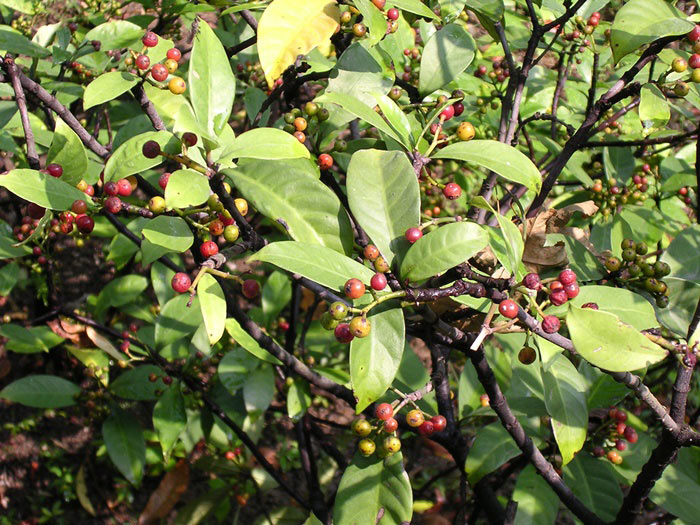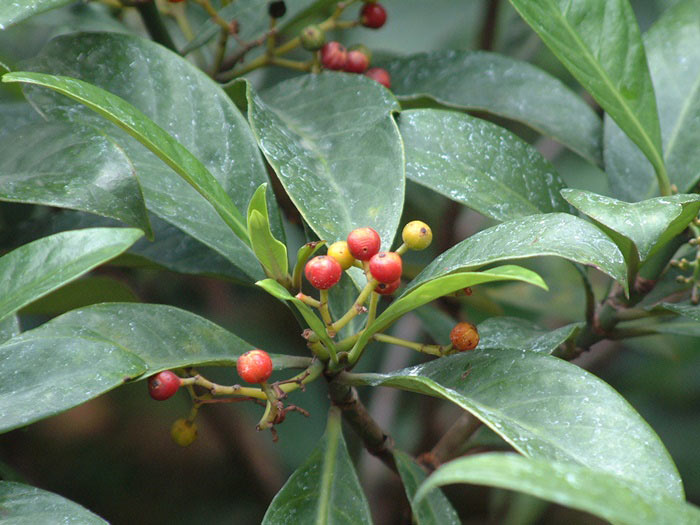Psychotria rubra
As you walk along the paths of the Botanical Garden, you will notice a medium height shrub in many areas. This shrub prefers to grow in the understory of forests, so it is particularly common in the densely forested Central Lowland Area and Northern Lowland Area. Under normal circumstances, few people would give this small shrub a second glance. However, once autumn and winter arrive, fruits of various colors—red, yellow, orange, and green—simultaneously appear among the branches and leaves, instantly making it the focal point of attention.
This plant is called the wild coffee. It is native to Taiwan and is commonly found in moist broadleaved forests, stream valley slopes, and secondary forests below an altitude of 1,500 meters across the island. It is not only an important member of Taiwan's native forests, but also demonstrates the ingenious adaptation of plants to shady and humid environments.
Its main root is not prominent, and its root system is shallow and widely distributed, which facilitates the absorption of nutrients from the surface humus layer. The stem has distinct nodular swellings that enhance branch flexibility and resistance to bending. Even when covered by fallen logs, new buds can sprout from these nodes. The dark green, leathery leaf surface is covered with a waxy layer that reflects weak understory light, while the pale green underside is densely covered with stomata to facilitate transpiration regulation. When the fruit matures, the peel turns bright red, thin and juicy, attracting birds to feed on it, and the seeds are dispersed by birds. Additionally, it has strong shade tolerance and can grow well in low-light environments. The plant is not tall, with dense branches and leaves, providing an excellent habitat for small animals in the forest understory. It plays an important role in the entire forest ecosystem.
In addition to Taiwan, the wild coffee is also distributed in southern China and Hainan Island, as well as from the Ryukyu Islands to Japan.

